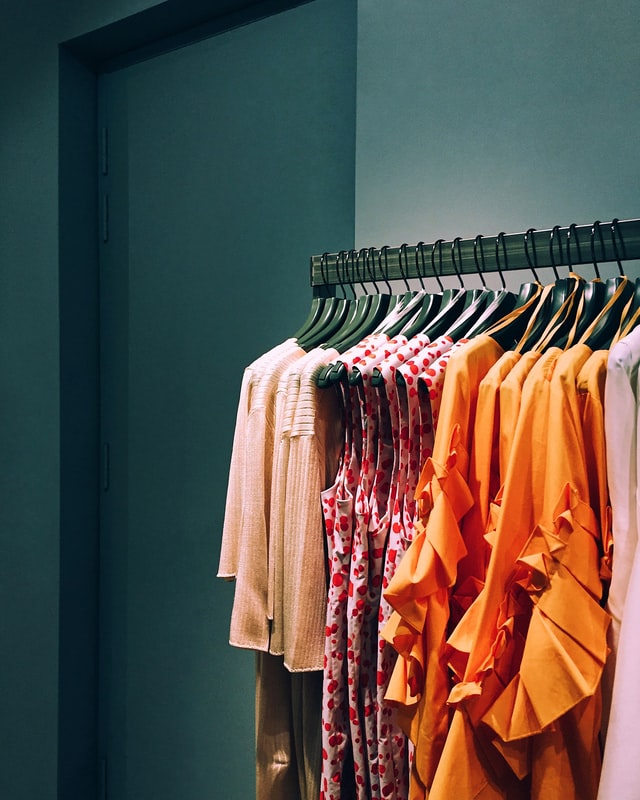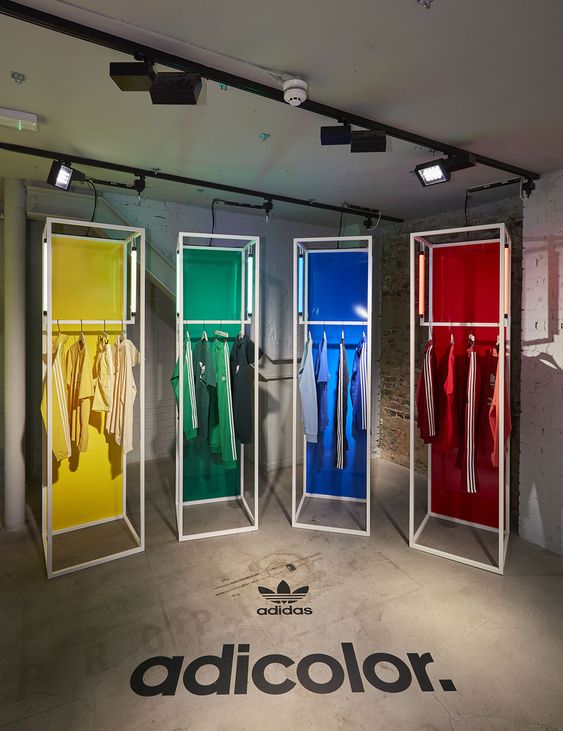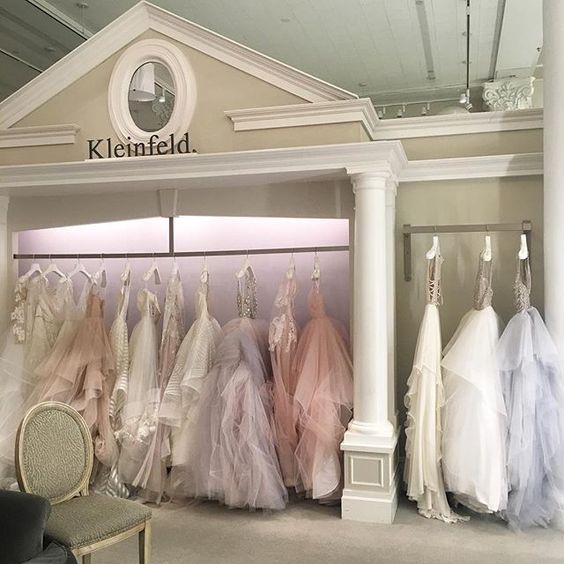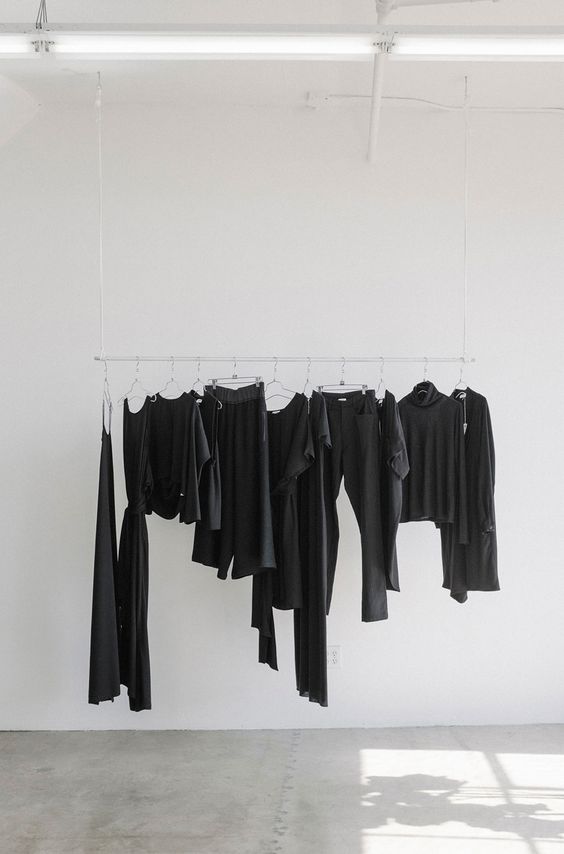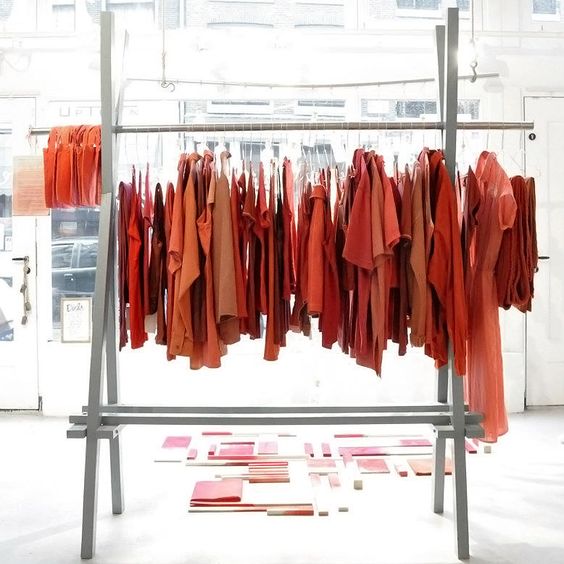However, how successful is this approach in terms of increasing sales?
When a visual merchandiser hangs clothes up in a shop, he/she is primarily interested in getting customers to buy more items.
Usually a customer comes to a store for a specific item or specific items. For example, a woman wants to buy a skirt. She walks into a store and goes to where skirts are sold.
Let's imagine that the store is divided by color scheme. For example, she wants to find a green skirt. She goes to the green corner, i.e. to the shelves where green clothes are hung, she sees three green skirts, chooses the one that she likes the most, goes to the fitting room, measures it, and if everything's alright, she buys this skirt.

